Showing 971–980 of 1165 results
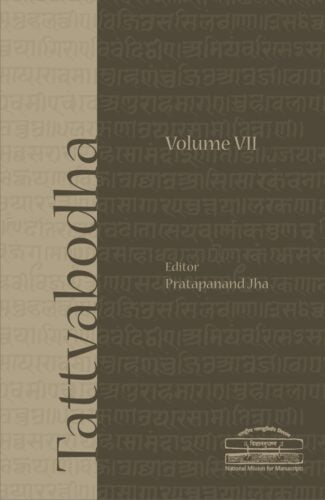
This volume, seventh in the series, consists of twelve papers eleven in English and one in Hindi presented by scholars of high repute in different Tattvabodha lectures organized by the National Mission for Manuscripts, presenting varied topics across Indian knowledge system.
The National Mission for Manuscripts was established in February 2003 by the Ministry of Culture, Government of India with the purpose of locating, documenting, preserving and disseminating the knowledge content of India’s handwritten manuscripts, said to be the largest collection of handwritten knowledge documents in the world. While looking ahead to reconnect with the knowledge of the past, the Mission is in the process of trying to re-contextualize the knowledge contained in manuscripts for the present and the future generations.
The Mission launched a lecture series titled Tattvabodha in January 2005. Since then, a monthly lecture series is organized in Delhi and other academic centres all over the country. Tattvabodha has established itself as a forum for intellectual discourse, debate and discussion. Eminent scholars representing different aspects of India’s knowledge systems have addressed and interacted with highly receptive audiences over the course of the past few years.
This volume, seventh in the series, consists of twelve papers Þ eleven in English and one in Hindi presented by well-known and upcoming scholars in different Tattvabodha lectures organized by the Mission.
The volume finds its merit in varied subjects across Indian knowledge system such as Accessing Manuscripts in the Digital Age; Physics in Ancient Indian Knowledge System; Critical and Comparative Review of the Principal Upanishads; The Concept of Shiva in Shiva-rahasya; The Ramacaritam of Ciraman; Editing of Ayurvedic Manuscripts; The Dravyanamakara Nighantu; Tribal Heritage and Indigenous Philosophical Wisdom of Odisha; Glimpses of Archival Manuscripts; Gandhari: A Key Mother Figure of the Mahabharata; Depiction of Indian Culture in Sanskrit Inscriptions of Cambodia; Phasi Katha-Parampara aura Arabyayamini.
The introductions, interpretations, explanations and analyses involved herein should solicit keen interest among academicians, scholars and students of Indology.
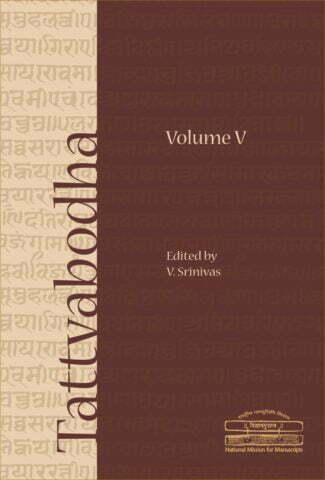
This volume, fifth in the Tattvabodha series, contains eleven papers in English, Hindi and Sanskrit, covering a variety of subjects of Indian knowledge system presented by well-known authors in different Tattvabodha lectures organized by the National Manuscript Mission.
The National Mission for Manuscripts was established in February 2003 by the Ministry of Culture, Government of India with the purpose of locating, documenting, preserving and disseminating the knowledge content of India’s handwritten manuscripts, said to be the largest collection of handwritten knowledge documents in the world. While looking ahead to reconnect with the knowledge of the past, the Mission is in the process of trying to re-contextualize the knowledge contained in manuscripts for the present and the future generations.
The Mission launched a lecture series titled Tattvabodha in January 2005. Since then, a monthly lecture series is organized in Delhi and other academic centres all over the country. Tattvabodha has established itself as a forum for intellectual discourse, debate and discussion. Eminent scholars representing different aspects of India’s knowledge systems have addressed and interacted with highly receptive audiences over the course of the past few years.
This volume, fifth in the series, contains eleven papers presented by well-known authors in different Tattvabodha lectures organized by the Mission. These papers are in English, Hindi and Sanskrit, covering a variety of subjects of Indian knowledge system.
The authors deliberate on topics such as the closeness of the Rigvedic language to the Proto-Indo-European language; different branches of learning in medieval Bengal; unique manuscripts of Asiatic Society; eighteenth-century Calcutta based on the leads from the British Official Records; Sanskrit as the mind of Silk Route; formation of Kashmiri language; a comparative study of Bengali, Hindi and Malayalam Ramayanas; Arabic manuscripts and Arabi-Malayalam literature of Kerala; Bhakti Literature of Rajasthan; manuscripts on Ayurveda; and published and unpublished commentaries of Bhagavata Purana.
These scholarly articles should invoke keen interest among academicians, scholars and students of Indology.
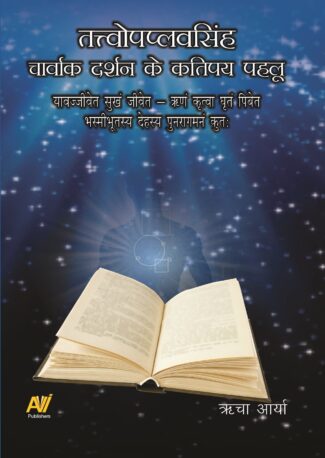
Jayarashibhatta’s Tattvopaplavsimha (ca. 8th cent.) is a work of the Charvak philosophy, which rejects evidence other than the direct evidence. The manuscript of Tattvopaplavisimha was obtained from Patan in 1926. The historical work examines ‘Evidence’ in the light of Indian philosophy. The present book reviews the refutation of various epistemological principles explained in Tattvopaplavsimha.
Jayarashibhatta’s Tattvopaplavsimha (ca. 8th cent.) is considered to be an important work of the Caravaka (Charvak) philosophy. The Charvak philosophy rejects evidence other than the direct evidence, to the extent that it does not consider sky as an element in the five fundamental elements (earth, water, fire, air and sky). The manuscript of Tattvopaplavisimha was obtained from Patan (modern-day Patna) in 1926. It was published in the Oriental Series in 1940 and with an introduction in Hindi by Pandit Sukhlal Sanghvi in 1987. The historical work examines the definitions of the evidence as accepted by various arms of Indian philosophy. The present book reviews the refutation of various epistemological principles explained in Tattvopaplavsimha.जयराशिभट्ट कृत तत्त्वोपप्लवसिंह (आठवीं शताब्दी) चार्वाक दर्शन का ग्रन्थ माना जाता है। चार्वाक दर्शन प्रत्यक्ष प्रमाण के अतिरिक्त सभी प्रमाणों को अस्वीकार करता है, इसके साथ ही प्रत्यक्ष को ही एकमात्र प्रमाण मानने के कारण चार्वाक पंचतत्वों (पृथ्वी, जल, अग्नि, वायु एवं आकाश) में आकाश तत्त्व को नकारता है। तत्त्वोपप्लवसिंह ग्रन्थ की पाण्डुलिपि सन 1926 में पाटन से प्राप्त हुई। सन 1940 में ओरियंटल सीरीज में तथा 1987 में पंडित श्री सुखलाल जी सांघवी की हिंदी भूमिका के साथ प्रकाशित हुआ। यह ग्रन्थ वैतण्डिक पद्धति होने के कारण भारतीय दर्शन के विभिन्न सम्प्रदायों द्वारा स्वीकृत प्रमाणों की परिभाषाओँ और प्रमाण की परीक्षा करता है। प्रस्तुत पुस्तक में तत्त्वोपप्लवसिंह में व्याख्यायित विभिन्न ज्ञानमीमांसीय सिद्धांतों के खंडन की समीक्षा की गयी है।

It is, for the first time, a complete Hindi translation of Bhatta Jairashis Tattvopaplavasimha by the two well-versed scholars of classical Indian Philosophy has been brought about. This translation, with a close hermenutical rendering of the text, provides a convincing structure of skeptical deconstruction of all the major systems of Indian Philosophical thought. Its study leads a reader toward a radical support of Charvaka Ideology by declaring the annihilation of all principles.
We come across variety of fragmented ideas related to the Philosophy of Charvaka in name of Bhutacaitanyavadi, Lokayatika, Akriyavadi and so on. But the Tattvopaplavasimha of Jairashi Bhatta is the only text available in Indian tradition which claims to rediscover the tradition of Brihaspati, supposed to be the founder of Charvaka Philosophy. It is, for the first time, a complete Hindi translation of the Tattvopaplavasimha is brought out by two well-versed scholars of classical Indian Philosophy. This translation, with a close hermeneutical rendering of the text, provides a convincing structure of dialectical as well as sceptical deconstruction of all the major systems of Indian Philosophical thoughts. Its study leads a reader towards a radical support of Charvaka ideology by declaring the annihilation of all principles.
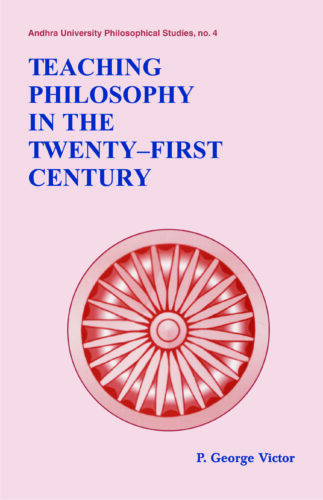
The papers study various aspects of teaching philosophy: its methods, models, techniques and associated problems and prospects. They scrutinize philosophy curriculum in universities and use of computers for teaching it. They discuss ways to popularise philosophy and introduce it at the elementary level in schools.
The relevance of philosophy in the strife torn world of today cannot be undermined: going into the why of ideas, philosophy examines the importance of concepts and ways to cultivate values, and foster them. But its growing unpopularity particularly as a discipline of study warrants specific attention. The book explores an important factor responsible for this the way in which philosophy is taught. The papers, presented at a national seminar sponsored by Indian Council of Philosophical Research, look into various aspects of teaching philosophy: its methods, models, techniques, associated problems and prospects in the coming decades to highlight the nature and relevance of philosophy. They scrutinise the philosophy curriculum in universities today and study the methods of teaching philosophy in ancient India, with their stress on summarising the essence of philosophical doctrines in sutras or aphorisms. Scholars from the West in their thought-provoking analyses present the changing patterns of curriculum and syllabus of philosophy, and the use of computers and science fiction for the purpose. The Indian teachers of philosophy, both old and young, emphasise on acquainting the students with philosophy right from the school level, and teaching philosophy in an entertaining yet edifying manner by presenting life stories of philosophers and teaching through novel methods. They discuss the need to introduce and popularize philosophy among people in general so as to make philosophy a way of life that can usher in moral and spiritual progress in the Twenty-first Century.

This book records the contribution and sacrifice of sixty-seven great Indian women from various walks of life. These short biographical accounts capture in letter and spirit the strength and power of women in various fields like education, music, dance, literature, sports, service, religion and spirituality.
Tejasvini is an inspirational handbook that records the contribution and sacrifice of sixty-seven great Indian women from various walks of life. These short biographical accounts capture in letter and spirit the strength and power of women from eleventh century ce to our present times. This book surveys the role of women in various fields like education, music, dance, literature, sports, service, religion and spirituality that the history has witnessed time and again.
This book also records the supportive role of women during revolutionary periods. The sacrifice of women during renaissance movements and in freedom struggle especially during the Revolt of 1857 is a highly motivating remainder of their bravery and valour. The lives of these women, marked by discipline and strengthened by ethical codes, have made them immortal beings that will serve as the guiding spirit for generations to come. There is a place in this book highlighting the lives of many lesser or unknown warriors, scholars, artists, devotees and others.
This book is expected to inspire young minds, especially the women of modern India.

In this volume the first English-language publication on the subject the author describes the various indigenous musical instruments which support rituals and performances within and outside the temples of Kerala. Illustrations of each instrument, accompany the text, with information on its dimensions, construction, playing techniques, methods of training and music.
The performing arts of Kerala Kathakali, Kutiyattam, Mohiniattam, and other forms of dance and drama occupy a vital space in Indias creative imagination. All these performances move to a music that is supported by Keralas indigenous musical instruments a variety of drums and clappers, as well as a smaller number of pipes and strings.
Quite a few of these instruments are also found associated with rituals and festivities in the temples of Kerala: the Itakka, Chenta, Timila, Milavu, Suddha Maddalam all membranophones; the aerophones Kurum Kulal and Kompu Vadyam; and Ilattalam, an idiophone. Notes on these instruments by a devoted student of the performing arts of Kerala are put together in this small volume the first English-language publication on the subject. Illustrations of each instrument accompany the texts.
The author brings to his task the benefit of an intimate knowledge of each instrument, acquired through years of fieldwork, as well as an erudition born of his immersion in literary classics in Tamil, Malayalam and Sanskrit. The pieces here are a source too of the folklore associated with Keralas musical instruments. The chief strength of the book, however, lies in the precise information it provides on each instrument its dimensions, materials, construction, playing techniques, methods of training, and, not least, its music.
Apart from musicians and musicologists, this book would interest students of Keralas folklore and anthropology, as well as general readers with a special interest in the arts and culture of Kerala.
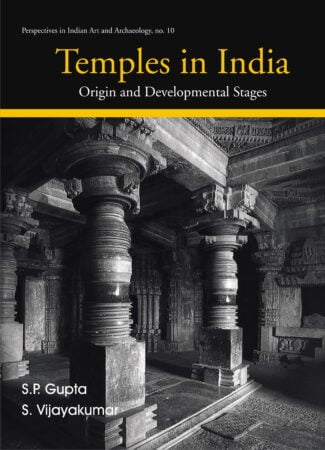
This volume studies the beginning and evolution of temple architecture in India and deals with temples constructed by different ancient and medieval dynasties in various parts of the country. It contains over a hundred plates of temples and carvings on them, cave faades, pillar descriptions, etc. Many Jaina temples are also covered.
This volume is a study of the beginning and evolution of temple architecture in India which covers sculptures and carvings as well. With over a hundred plates of temples and carvings on them, including cave facades and pillar depictions, it deals with temples constructed by the different ancient and medieval dynasties in Indian history, particularly the Early Western Calukyan and Later Western Calukyans, Pallava, Pandya, Cola, Hoyasala and Nayaka. With illustrations that include maps, plans of caves and even viharas and caityas, it undertakes a study of the temples found in different States of India. The research discusses the variations in plans and elevations to examine development of temple architecture over time and new experimentations in the building of temples by use of various materials. Reconstructing art and architectural styles from the remnants of the ruined temples in many places, it explains terms and concepts in temple building and architecture and cites examples of various temple styles and traditions including the best and the earliest ones. The focus is on the Dravida and Nagara temple styles and a third hybrid form of ÷ikhara that developed in the Deccan. Many Jaina temples are also covered. The book will prove extremely useful for scholars and students of Indology, particularly those studying Indian religious architecture.

This volume studies the beginning and evolution of temple architecture in India and deals with temples constructed by different ancient and medieval dynasties in various parts of the country. It contains over a hundred plates of temples and carvings on them, cave faades, pillar descriptions, etc. Many Jaina temples are also covered.
This volume is a study of the beginning and evolution of temple architecture in India which covers sculptures and carvings as well. With over a hundred plates of temples and carvings on them, including cave facades and pillar depictions, it deals with temples constructed by the different ancient and medieval dynasties in Indian history, particularly the Early Western Calukyan and Later Western Calukyans, Pallava, Pandya, Cola, Hoyasala and Nayaka. With illustrations that include maps, plans of caves and even viharas and caityas, it undertakes a study of the temples found in different States of India. The research discusses the variations in plans and elevations to examine development of temple architecture over time and new experimentations in the building of temples by use of various materials. Reconstructing art and architectural styles from the remnants of the ruined temples in many places, it explains terms and concepts in temple building and architecture and cites examples of various temple styles and traditions including the best and the earliest ones. The focus is on the Dravida and Nagara temple styles and a third hybrid form of ÷ikhara that developed in the Deccan. Many Jaina temples are also covered. The book will prove extremely useful for scholars and students of Indology, particularly those studying Indian religious architecture.
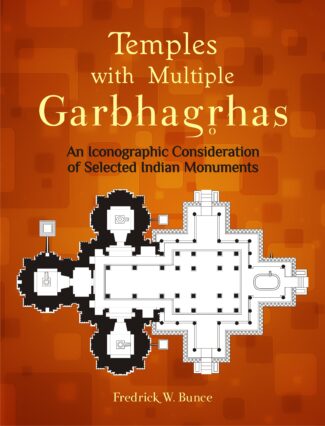
This volume identifies and presents over one-hundred temples having more than one garbhagrha, categorized as dvikuta, trikuta, catuskuta, pancakuta, saptakuta, navakuta and caunsath. It features the temples in detail: their historical milieu, their iconography and the application of mandala(s) to their plans.
Hindu temples are raised to their deities. They are a means to acknowledge the deity and to enshrine his/her images. People honour and worship the deity. Within the Hindu pantheon, there is an array of divinities spread over three major sects Þ Vaisnava, Saiva and Sakta. All these sects have stemmed from the Vedic teachings and beliefs. Normally a temple is devoted to a single diety, having a solitary sanctum (garbhagrha), called ekakuta. In this volume, the author, through his serious research, has made a sincere attempt to identify, present and feature about one hundred temples with multiple garbhagrhas which are categorized as dvikuta, trikuta, catuskuta, pancakuta, saptakuta, navakuta and caunsath yogini temple.
This book delves deep into the details of these temples: their historical milieu, their iconography, the application of mandala(s) to their plans and so on. It also attempts to correct those errors crept in the earlier studies of other researchers in understanding and detailing a few multiple garbhagrhas. The author has given a brief description of such temples and has made a sincere effort to provide a relatively precise scale rendering of those temples, in a size and format, commensurate with their importance.
This volume can serve architects, temple planners, researchers, vastu experts and even historians as a sourcebook on temples with multiple garbhagrhas.
| There are no products |